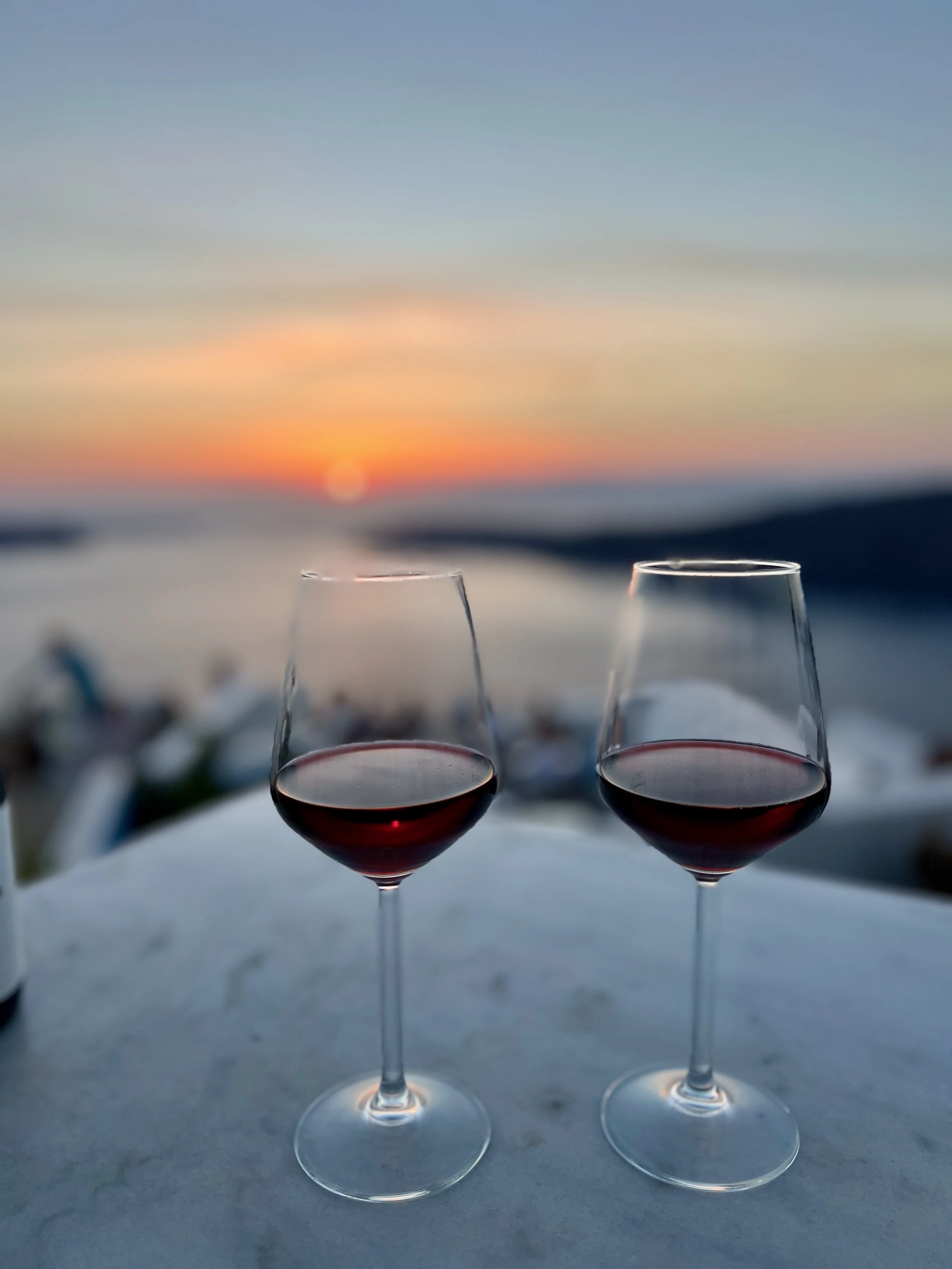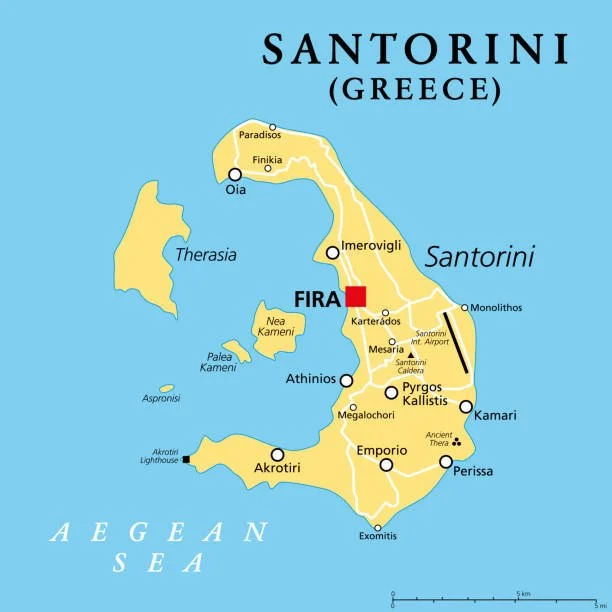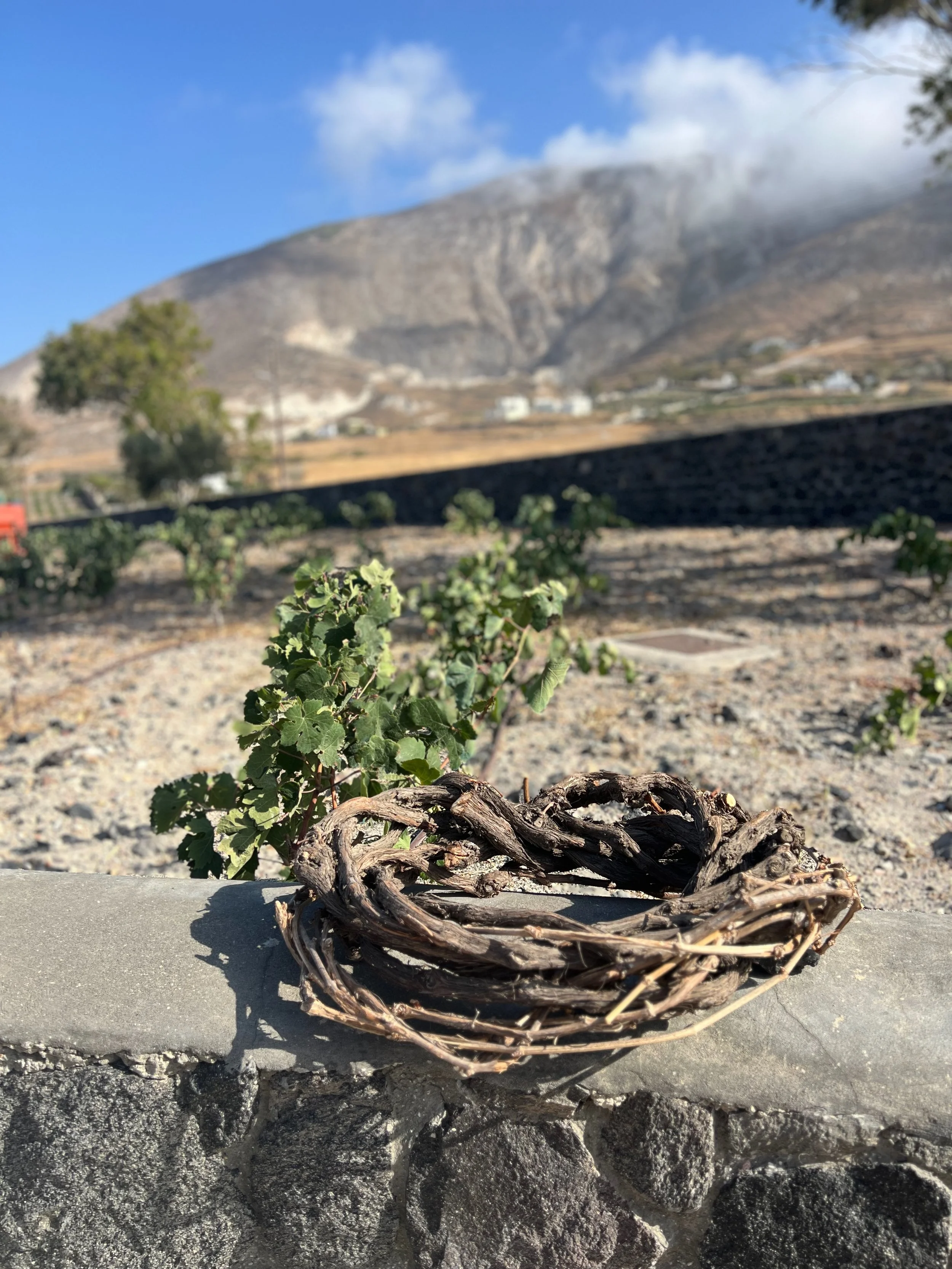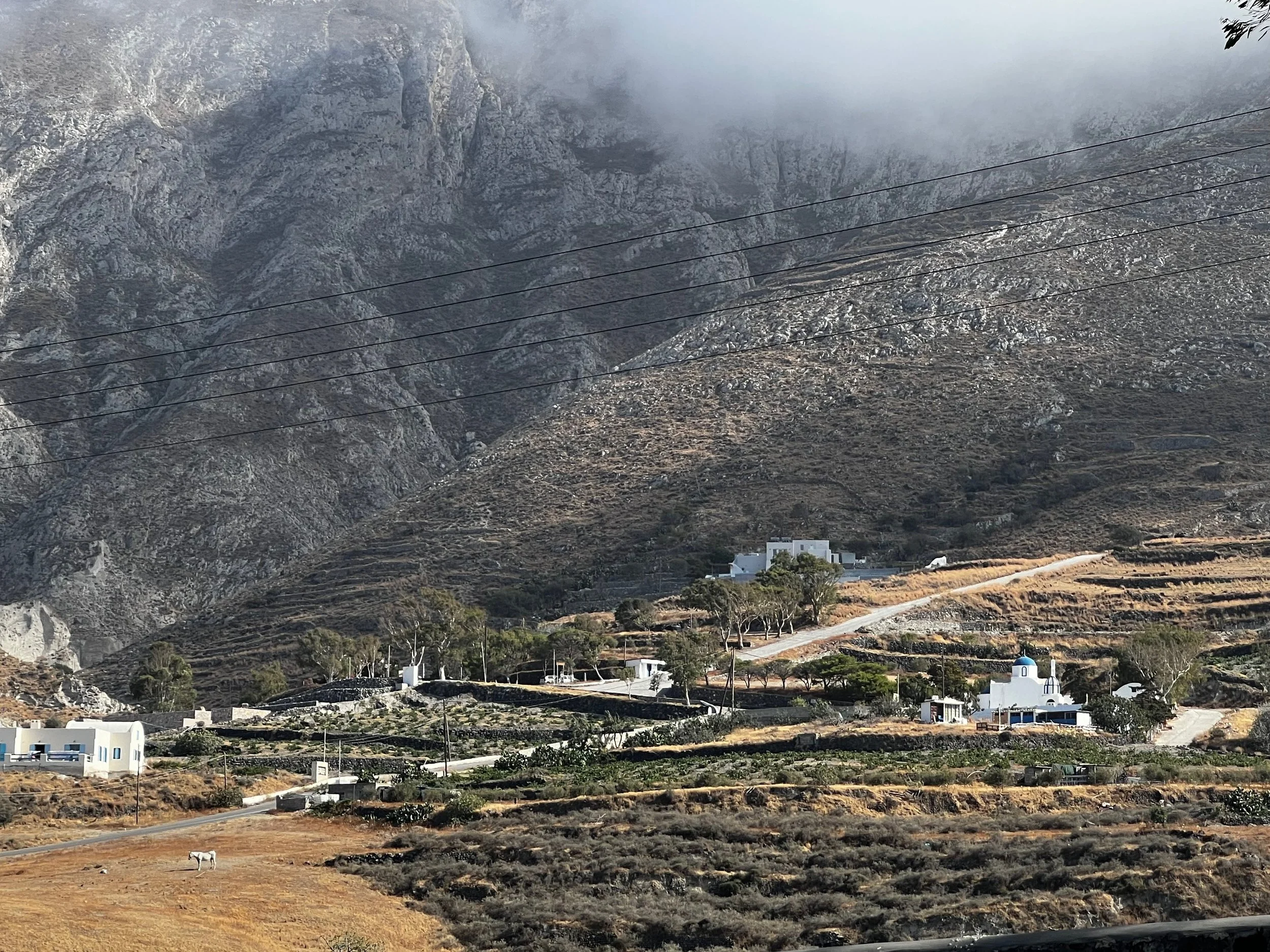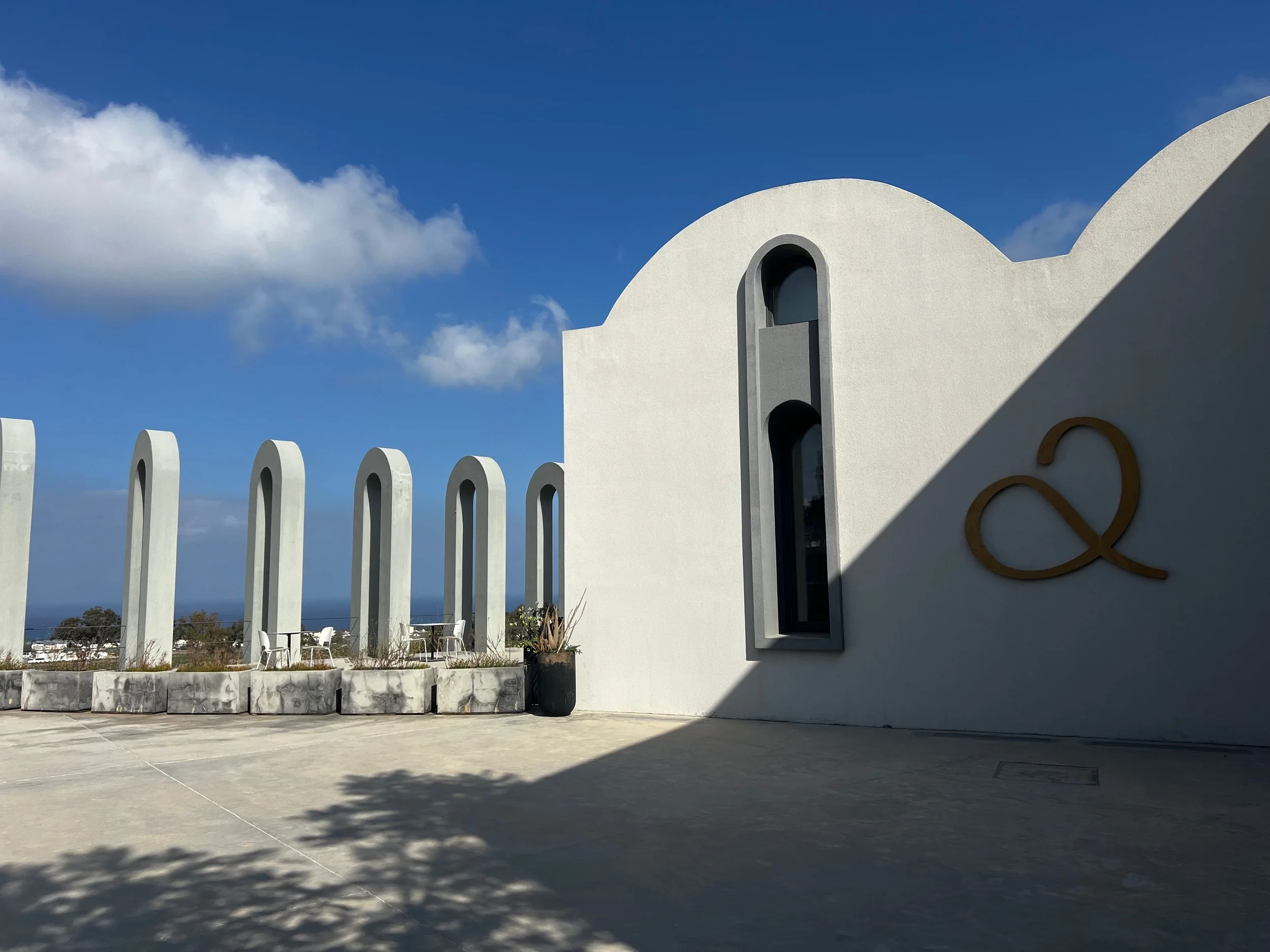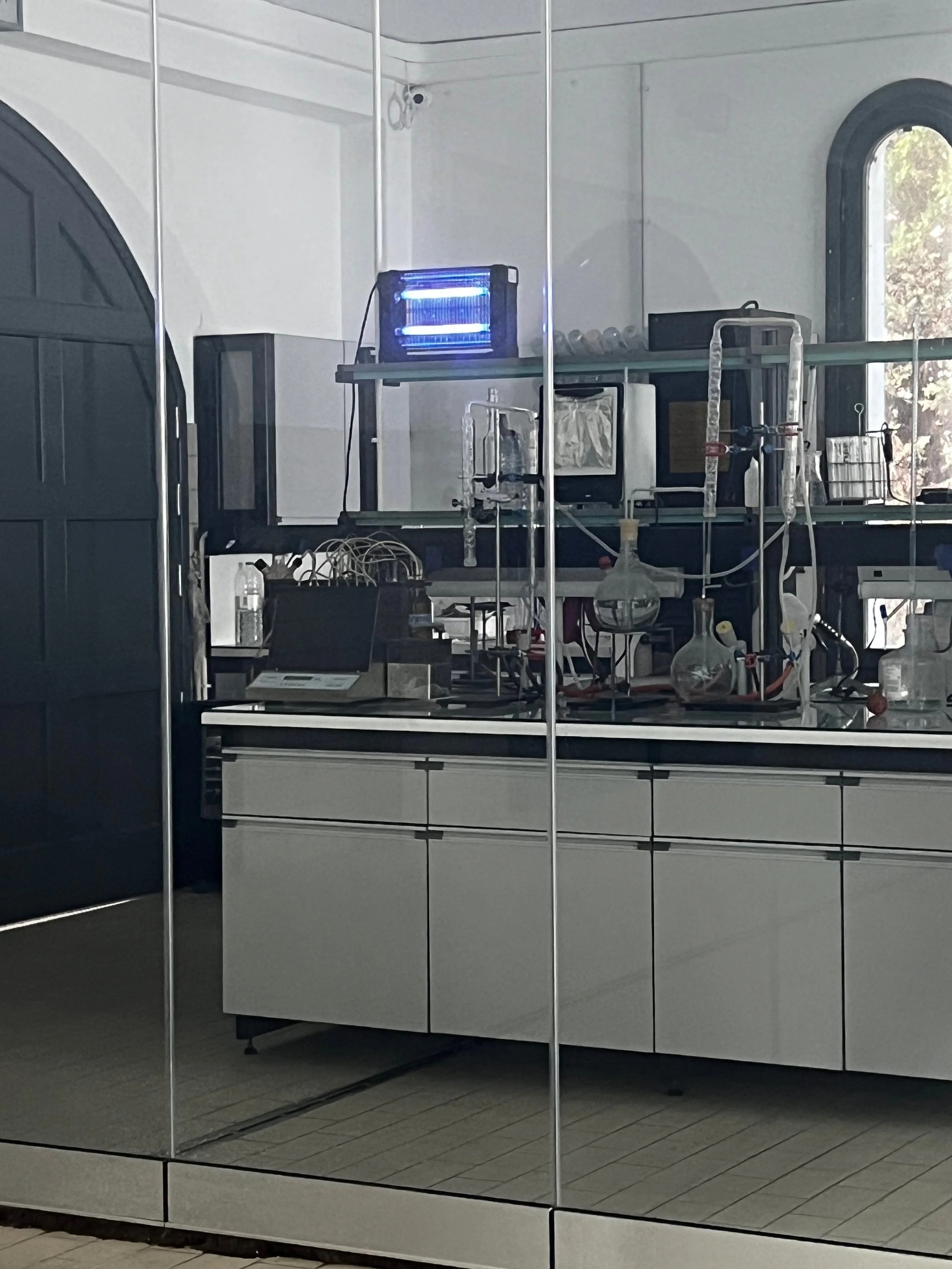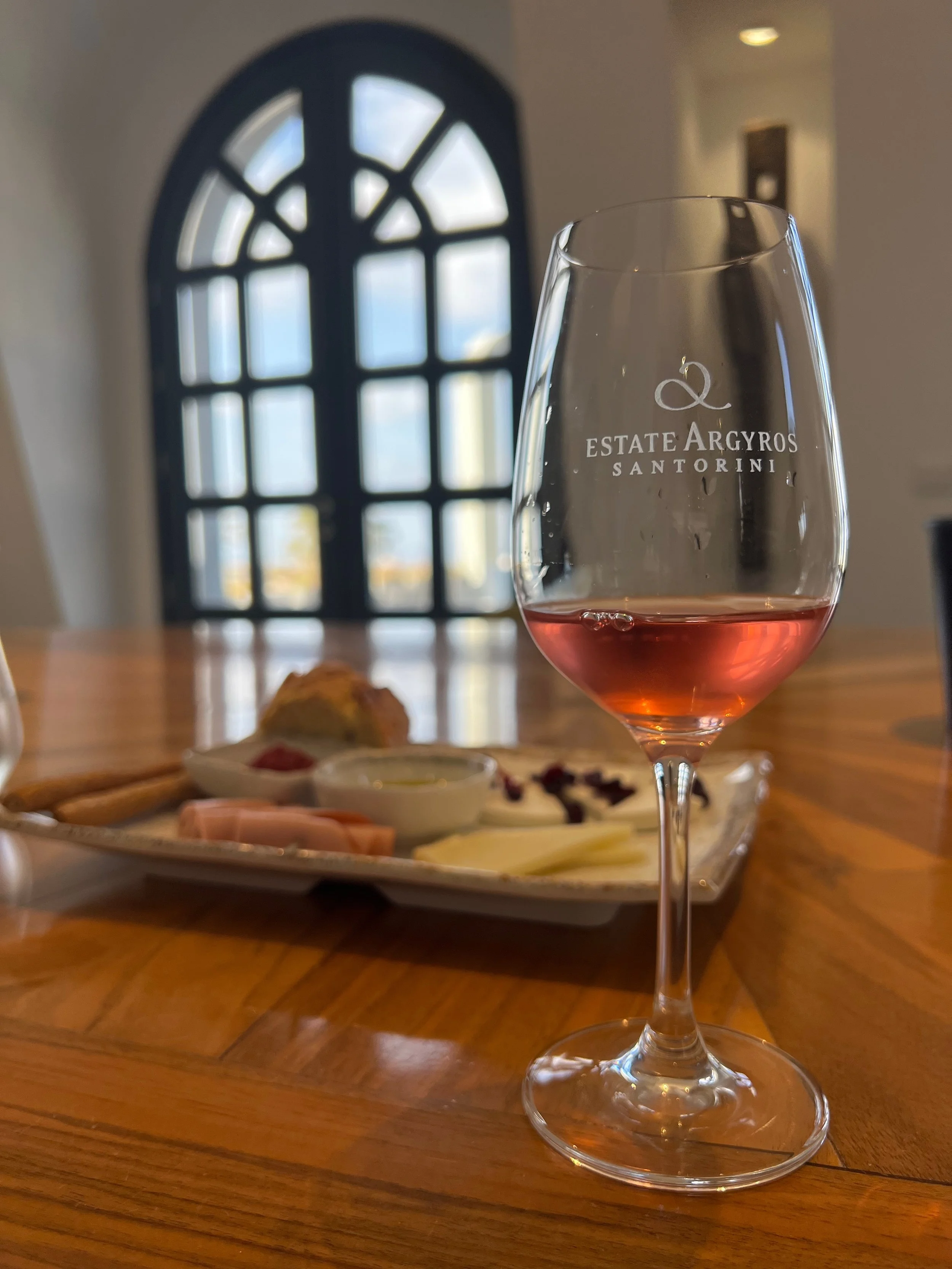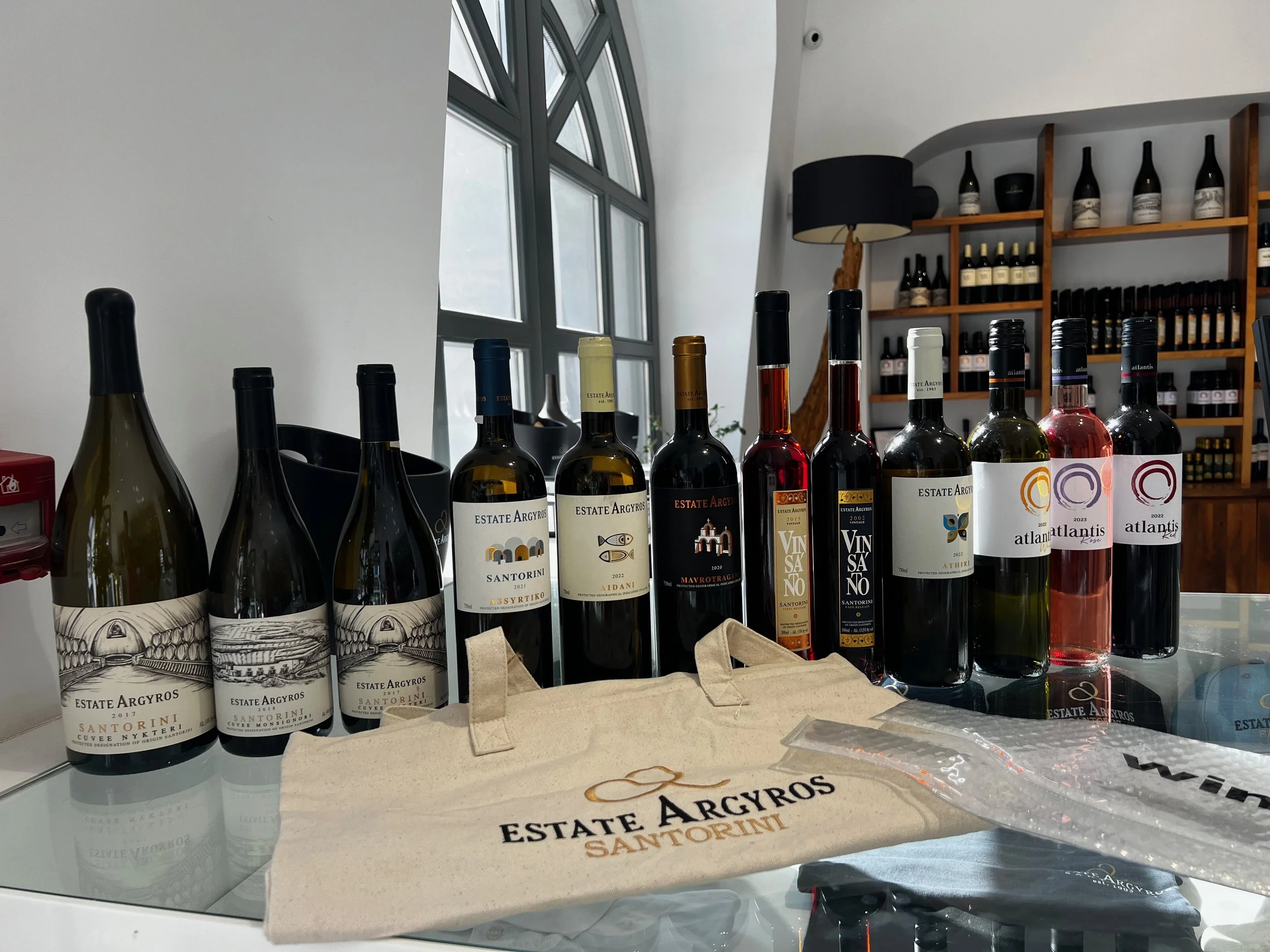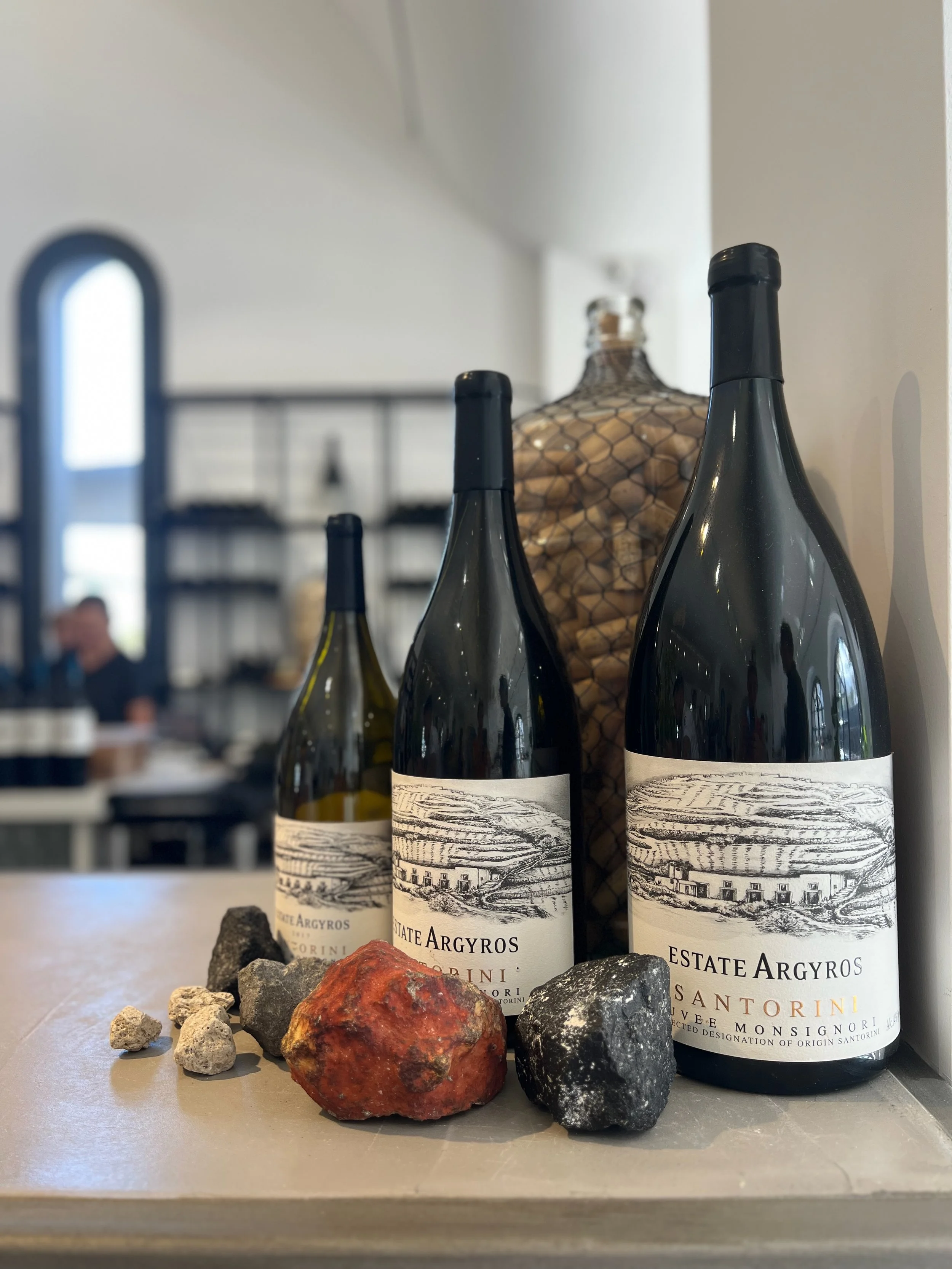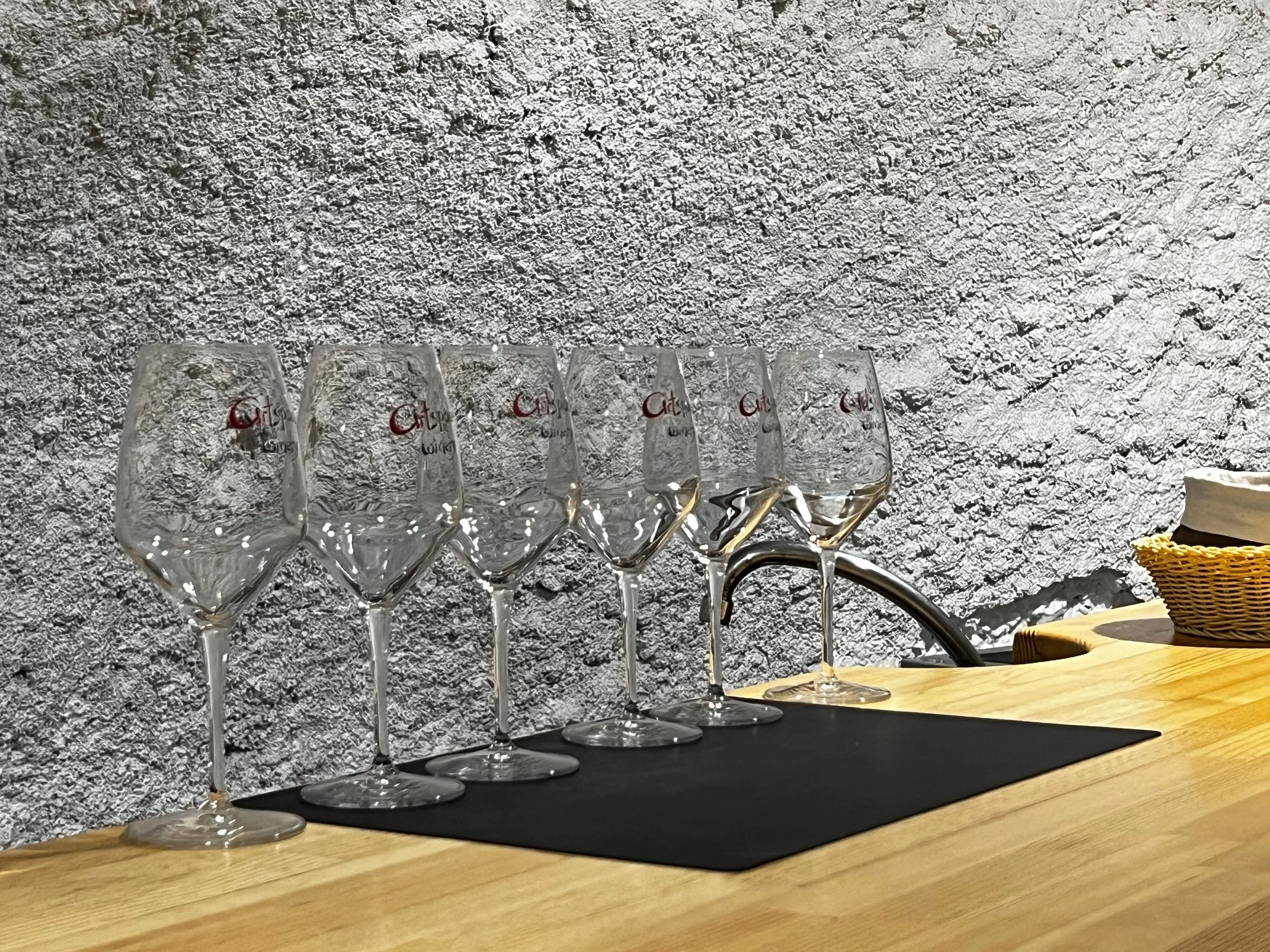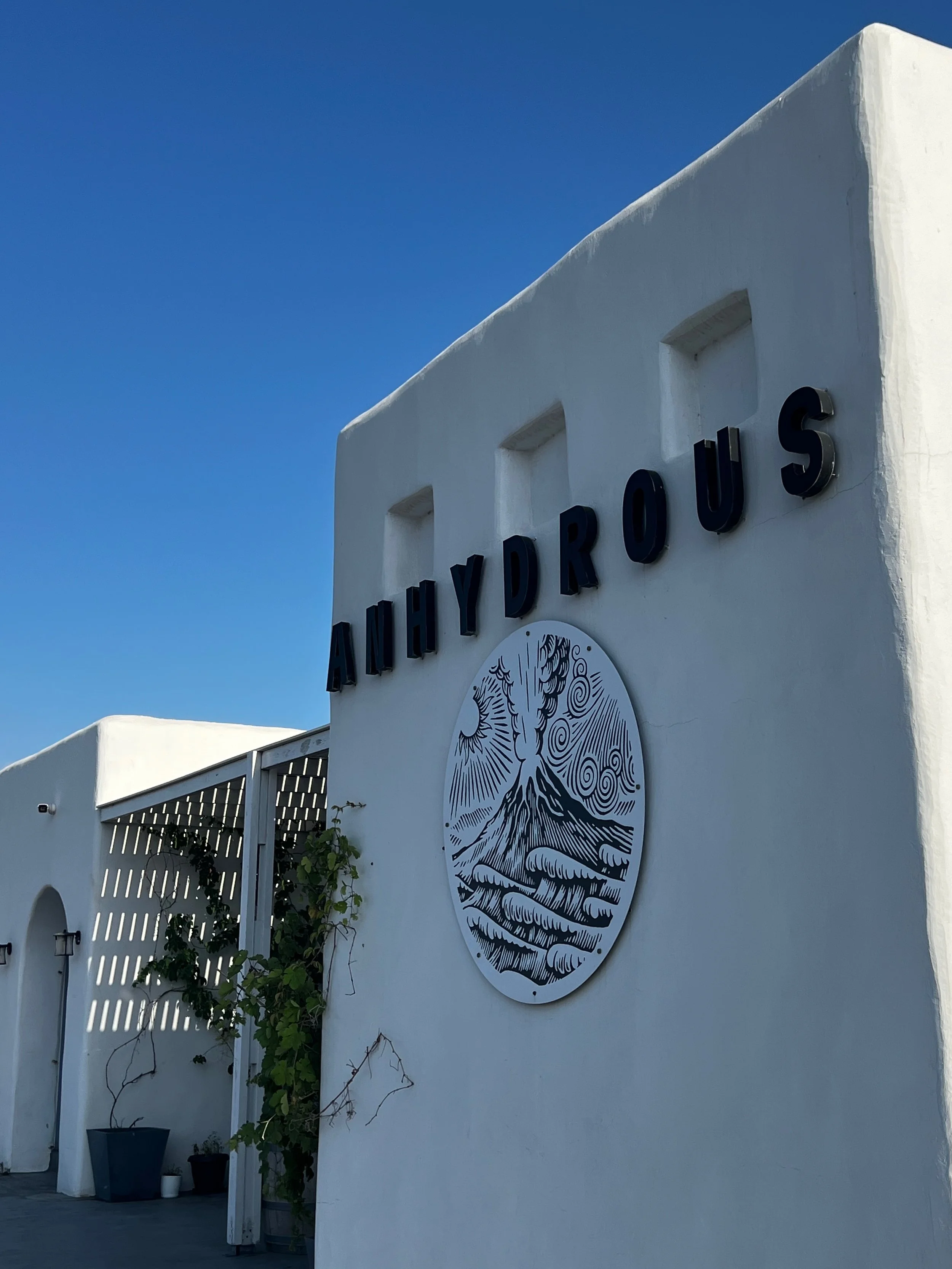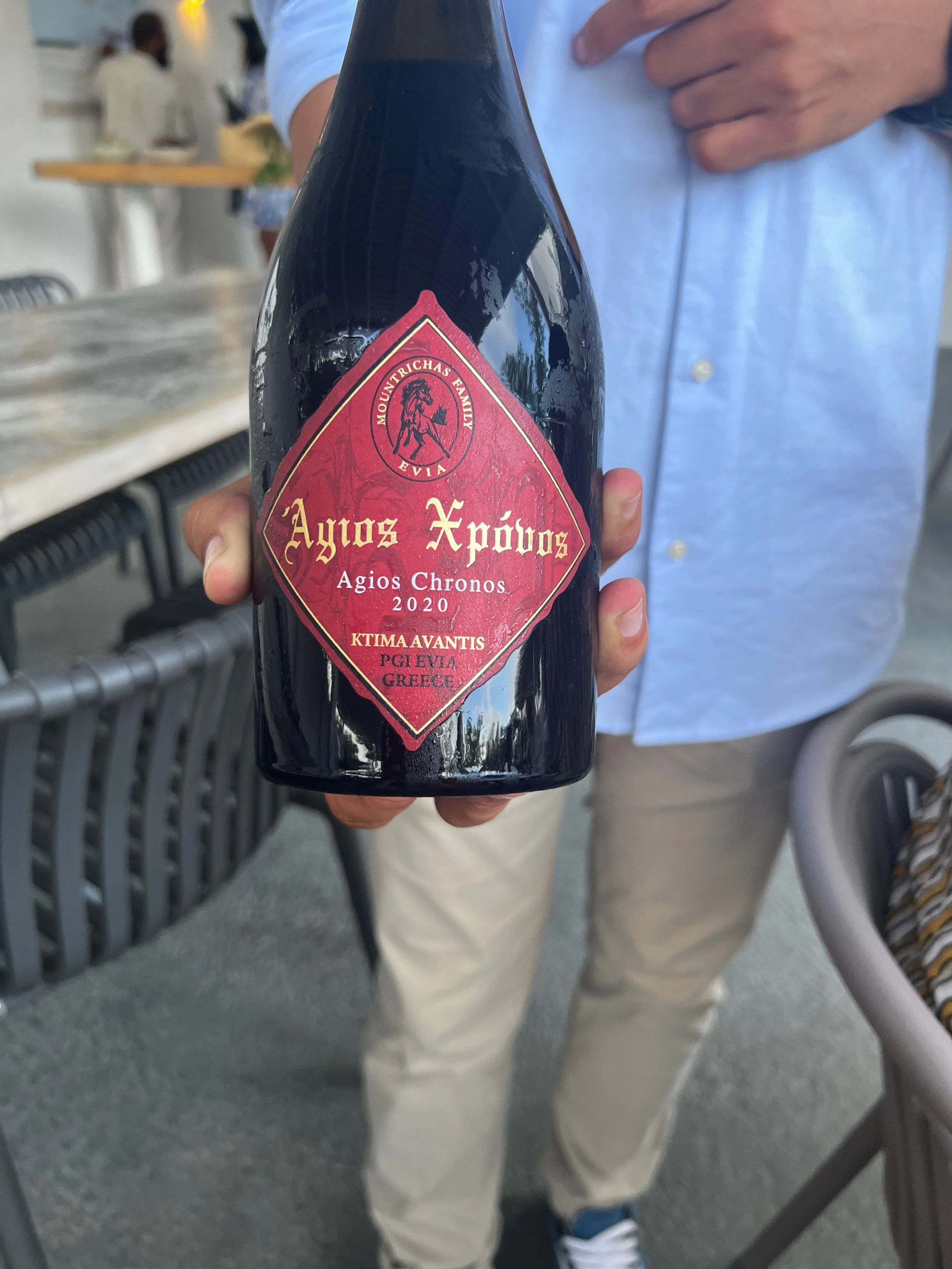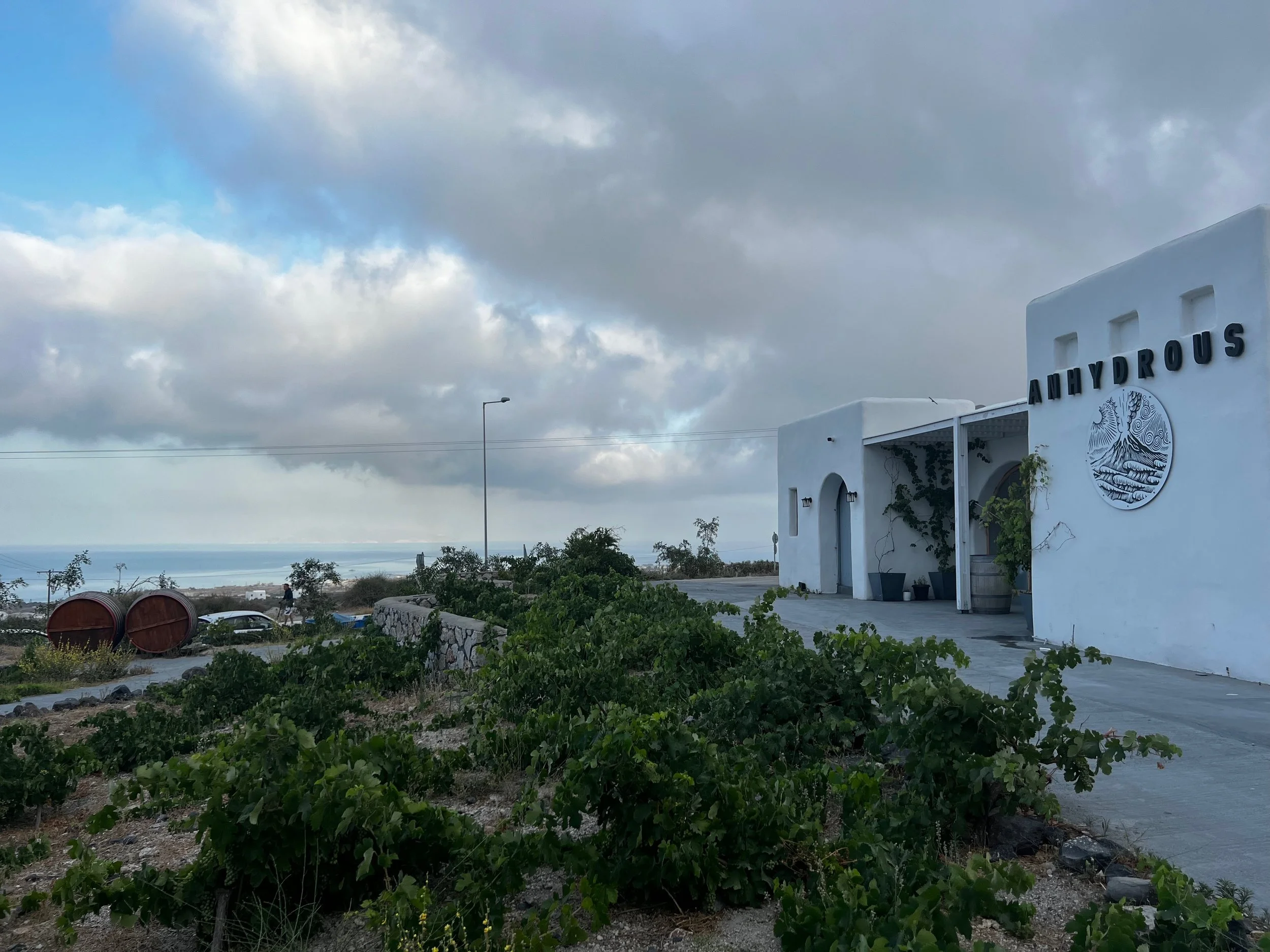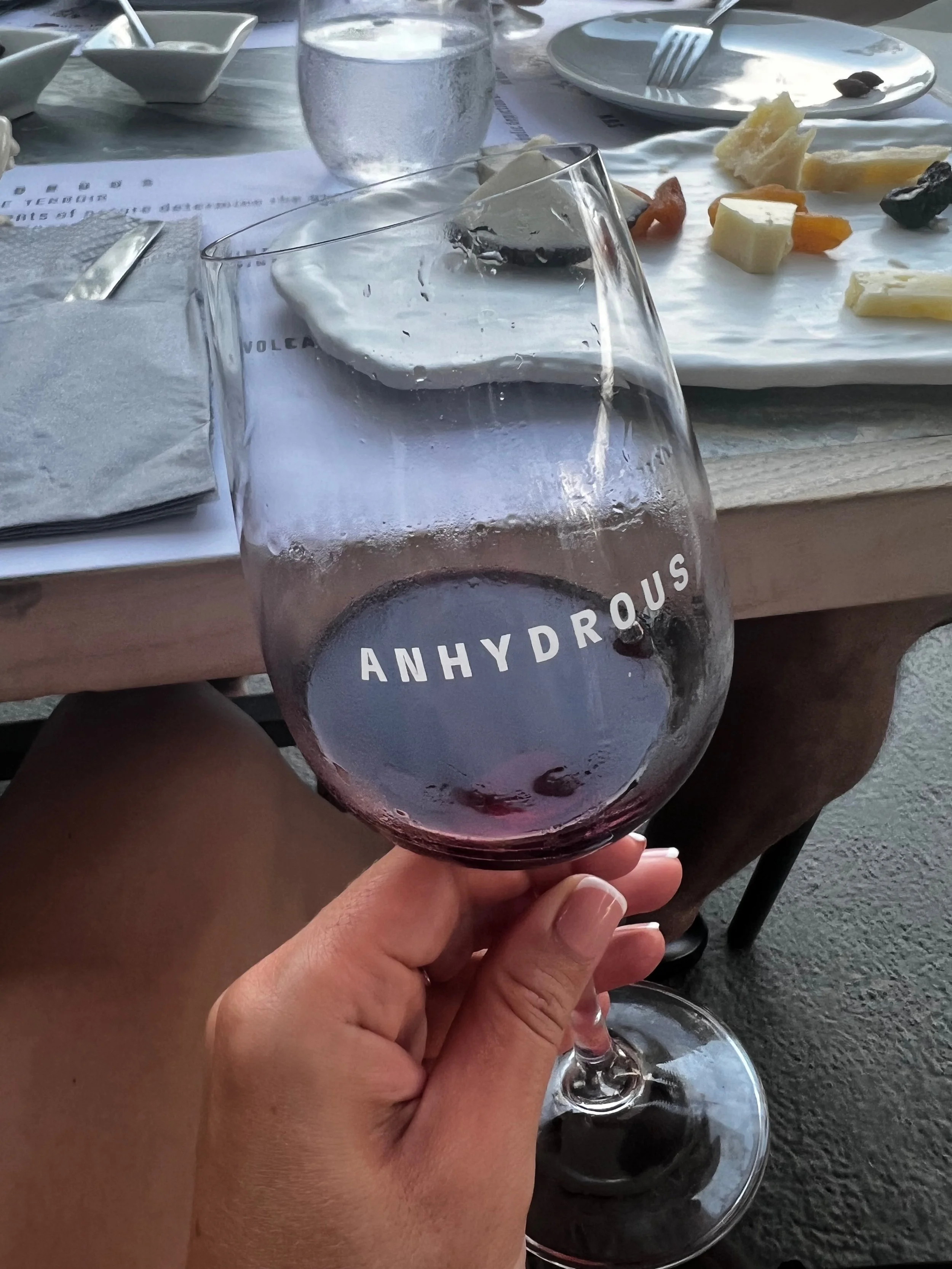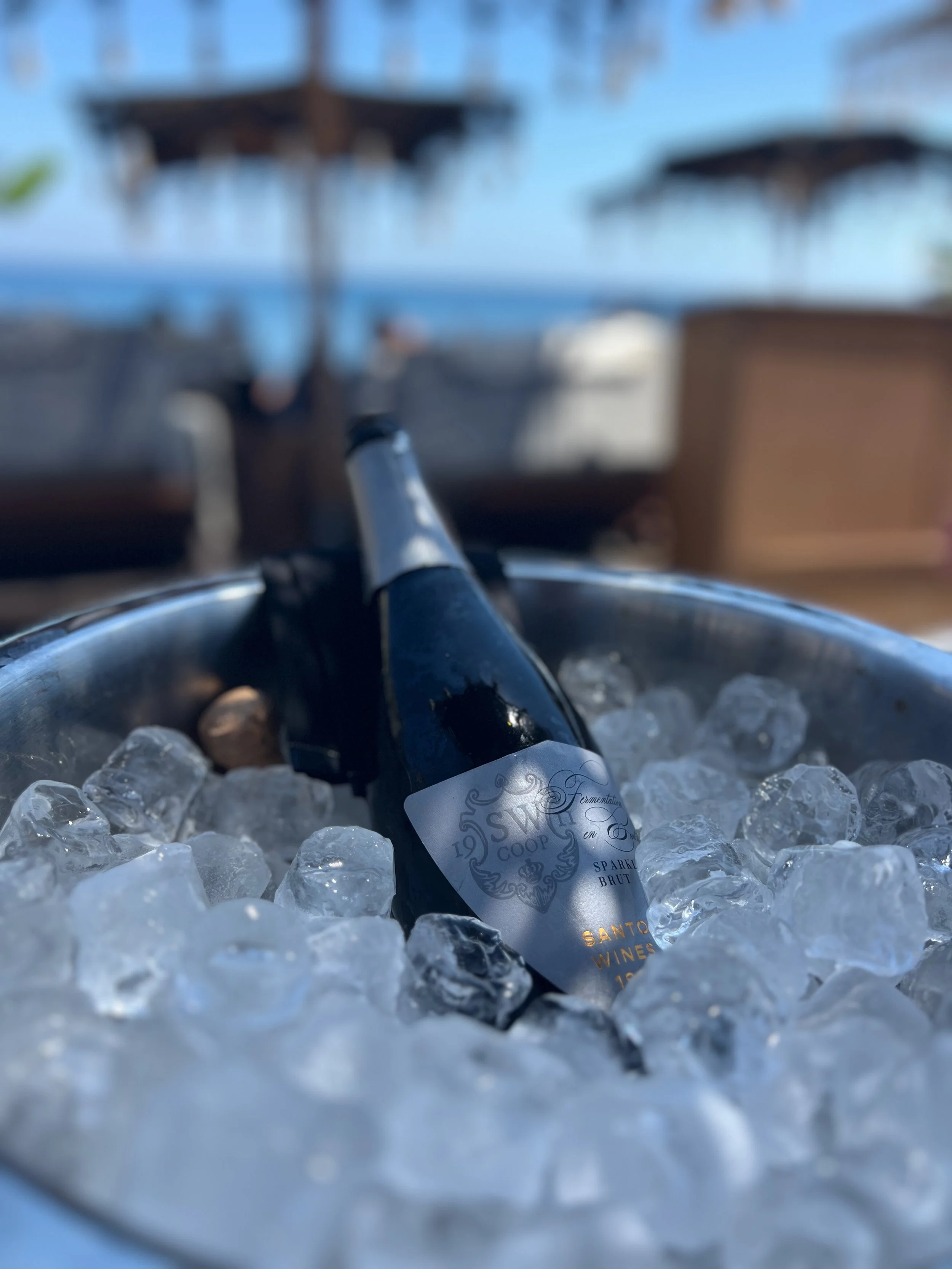From volcano to your glass: Santorini Wines
Wine has been part of Santorini’s story for thousands of years, literally since the Bronze Age.
The island’s winemaking roots trace back to ancient Thera, long before the massive volcanic eruption around 1600 BCE reshaped the landscape.
Archaeological finds at Akrotiri include wine jugs and grape seeds, showing that people here were making and enjoying wine over 3,500 years ago.
Great, but what does this have to do with my wine?
What is Thera?
Well, despite loving a good history rant - this is quite a bit sticking point about Santorini’s terroir. The eruption left behind a very unique blend of volcanic soil that ultimately became the foundation for some of the most distinctive wines in the world.
The volcanic eruption not only carved the beautifully dramatic aspects to watch the sunset from, but also left behind a mixture of pumice stone, volcanic ash, sand and pieces of solidified lava which make up the incredibly unique soil we now refer to as “aspa”. Aspa is hugely important for a number of reasons (not limited to the fact that if you swim in the volcanic caldera springs - and you should- you will likely colour your swimsuit with the minerals which you’ll never be able to launder out), but more on that later.
So when you sip a glass of Santorini wine, you're not just drinking wine — you're tasting a bit of ancient history.
Thera is the ancient name for what we now call Santorini. In antiquity, this was a thriving island civilization in the Aegean Sea which was also a part of the broader Minoan culture. It was a wealthy, cosmopolitan and hugely advanced island with multistory homes, beautiful frescoes, and indoor plumbing. Much of this was discovered at what now is the incredible Akrotiri archaeological site.
Around 1600 BCE, the island experienced one of the largest volcanic eruptions in recorded history, which buried Akrotiri in ash (preserving it like Pompeii, but over a thousand years earlier) and ultimately transformed the island completely.
For a long time the changed, now crescent island with the flooded caldera, was uninhabitable. It is believed it was only around the Geometric and Archaic periods (roughly 900–600 BCE) that the Greek colonists revived agriculture and trade on the island, along with winemaking.
Santorini’s indigenous grapes
White grapes
White grape varieties are the dominant in production on the island. The white varieties that call the beautiful island home are:
Assyrtiko
Absolutely a flagship grape of the island. This grape is known for its crispness, high acidity, minerality. This grape can age beautifully and responds well to oak treatment.
Whatever it is, the way you tell your story online can make all the difference.
Aidani
Floral, aromatic and less acidic grape that is often used in blends with Assyrtiko to round it out.
Athiri
Fruity and delicate, the wines from this grape are often drunk early and do not age well.
Black grapes
While the while grapes are in the spotlight, the red wine scene is very much up and coming on Santorini and the island produces some gorgeous reds. Indigenous grapes are:
Mavrotragano
This grape almost went extinct at one junction, but is now making a comback with an impact. It produces rich, dark and spicy wines that lend well to aging.
Mandilaria
This grape is highly tannic and is therefore often used in blends rather than as a varietal wine or for rose wines, limiting the tannin content through minimising skin contact.
Uniqueness of the terroir
Outside of the uniqueness of the soil itself, the island of Santorini also benefits from a very interesting microclimate.
Essentially, the island is very windy and very hot. What does this mean? Well, in order to preserve the grapes from being sun-burnt well beyond their own natural resistance or from being battered off by the winds - the winemakers have devised a unique training method for the vines (how they basically set up the branches).
In Santorini only, wimemakers go around and basically braid the vines into a sort of a nest, placing the grapes in the middle of it. The low canopy of the leaves provides some natural sharing for the fruit, while the sturdy branches protect them from the harsh winds. This nest-like structure is known as a kouloura.
Some very old vines
Aspa (the soil, remember?), aside of its lovely taste and swim-short-coloring properties, has another incredibly unique gift it imparts on the grapes.
Because of its low clay quantity, it actually is inhospitable to this little pest that attacks grape vine roots - phylloxera. If you haven’t heard of these guys, it is a whole other long story but for today just believe me when I say that this is and incredibly unique and a huge deal in the wine world. Basically, what this means is that you can have wine that is made from incredibly old vines and that this is one of the very few places in the world where this is possible.
The other interesting thing is that, despite how hot it may get, wineries do not water the vines and always harvest mid-august. This is made possible due to the high acidity within the indigenous grapes, which are able to withstand such ripening without losing the lovely qualities we want in a balanced wine.
Touring the wineries
Exploring Santorini’s wineries is a relaxed yet unforgettable experience. Many are set on scenic cliffs or nestled into the island’s volcanic landscape and some are even in cavern like structures. You can either do these on your own (call ahead) or join an organized group through one of the several providers on the island.
During your tasting, you’ll likely get to sample everything from bright, mineral Assyrtiko to rich, sun-dried Vinsanto. Whether in a sleek modern estate or a charming cave winery, each visit blends history with flavour and brings out that distinct Santorini magic.
We had the pleasure of seeing three very different wineries, some of which export globally and you may have come across already.
Estate Argyros
Founded in 1903, Estate Argyros is one of the oldest and most respected wineries on Santorini. Now in its fourth generation of family ownership, the estate has built its reputation on producing exceptional wines from old, ungrafted vines. Some of their vines are over 150 years old!
Located in the Episkopi Gonia area, Argyros is especially renowned for its mineral-driven Assyrtiko, elegant Vinsanto and its commitment to traditional, low-intervention winemaking that captures the essence of Santorini’s volcanic terroir. For example, they actually do not water their vines. I found this particularly difficult to comprehend while standing outside, in the blaring sun, in the middle of the summer.
Highlights of what we tasted
Assyrtiko 2021
This is the flagship wine of the estate and they believe is their truest representation. Grapes, 100% assyrtiko, are selected from the best parcels, some vines being over a century of age! The grapes also comes from top quality areas of the island, predominantly from Messaria, Karterados, Pyrgos, Megalochori and Akrotiri.
The wine is fermented in stainless steel at cool temperatures and then aged for two months in stainless steel tanks on fine lees.
The wine is beautifully balanced, medium body and has high acidity. You will notice nots of lemon, grapefruit, green apple and some salinity and wet stone. This beautiful expression even had aging potential for up to a decade.
Aidani 2022
As mentioned earlier, this grape is a typical blending variety, most commonly used in the Vinsanto blend. However, back in 2004, Yiannis Argyros decided to introduce a 100% Aidani single variety wine, after realizing its great potential, creating this beautiful bottle.
Wine is fermented and aged only in stainless steel in order to maintain the delicate aromas of the grape and serves as a great aperitif.
Light yellow in colour and medium acidity, this wine presents hints of tropical fruits, some herbs and white blossoms.
Atlantis Rose 2023
Another beautiful steel tank ferment from the winery, and this was perhaps my favorite for the hot day of our visit. The wine is a blend of Assyrtiko and Mantilaria and presents you with beautiful acidity, deep rose colour and a whole bouquet of vibrant red fruits on the palette.
Artspace Winery
Nestled in the volcanic village of Exo Gonia, Art Space Winery was originally built in 1861. However, the old pumice carved caves lay dormant until 1999 until when Antonis Argyros (the visionary descendant of the Argyros winemaking family we just discussed) restored the space and turned it into an art gallery and boutique winery.
Today, you can wander through subterranean tunnels lined with contemporary paintings and sculptures, peek at vintage presses and distillation tools in what is essentially a mini wine museum. Then you can proceed into a modern cave winery that is carved eight meters underground, which is simultaneously the perfect environment for aging their crisp Assyrtiko and Vinsanto blends. A tasting here feels a bit like stepping back in time, in a very lovely way.
Highlights of what we tasted
Mavrotragano 2020
This wine is made with minimal intervention, beginning with cold skin contact to enhance color and aroma, and followed by spontaneous fermentation using indigenous yeasts.
The wine is then aged for 28 months in oak barrels and bottled unfiltered using a natural gravity flow method. Maturation continues in the estate’s pumice-insulated cellar that is 12 meters deep. This allows the wine to evolve naturally under ideal conditions.
This was probably my favorite sample from this winery. The wine was a deep ruby with high tannins. It sported bold notes of red wild berries, dark cherry, vanilla, clove, plum, dried cranberry, and earthy tobacco.
Assyrtiko–Aidani 2023
A beautiful classic blend that undergoes a gentle cold-soak after harvest (mid August, which is common for the island) before fermentation begins in stainless steel tanks with indigenous yeasts. The wine is then aged on its lees in stainless steel for several months which preserving crisp acidity and mineral clarity.
On the palate, the wine is bright, medium-bodied and has strong notes of lemon zest and green apple which is layered with saline minerality and subtle floral notes. The Aidani rounds out the assyrtinko and adds a mode delicate layer of taste notes. Because of its addition you can also find some hints of pear and lychee.
Anhydrous
Located just a short 10 minute walk from Fira, Santorini’s capital, you can find Anhydrous Winery . It was founded in 2021 by acclaimed winemaker Apostolos Mountrichas who absolutely fell in love with Santorini’s volcanic terrain during his early Avantis Estate venture. He also went on to make it after the ancient Greek word “Anydros”, meaning “waterless”.
Winery is modest and has a minimalist Cycladic-style in what used to be a former open air cinema. The space is now transformed into a relaxed courtyard lined with iconic cement egg shaped and oak tanks for ageing wines like their signature 100% Assyrtiko Icon.
The winery offers a lot more in experiences than tastings and tours. With a beautiful kitchen they can do special dinners, cooking classes and even grape based spa treatments in a serene setting.
Highlights of what we tasted
Two Islands 2023
A refreshing white crafted from Malagouzia (native to central Greece) and Aidan. After harvest, the grapes undergo spontaneous fermentation with native yeasts in stainless steel. The finished wine is bottled without fining or filtration which maintaining its lively freshness .
On the nose, expect fragrant notes of citrus blossom and stone fruit. On the palate, it delivers juicy pear and white peach which supported by high acidity and a subtle saline finish and monerality which echoes the island’s volcanic soils.
Agios Chronos 2020
A beautiful expression of rhone style wine, brought up and created in Santorini environment. This is a syrah-viognier blend wine reflects Apostolos Mountrichas’s broader winemaking style that values small lot, terroir driven blends, oak-aged complexity and expressive result that can age very well.
Wine is deep ruby with high in tannins and medium acidity, carrying classic Rhone style notes of black fruits, plums, cherries, violet as well as pepper, vanilla and cloves.
On sparkling wines
Of course there is also a great sparkling wine production on the island. Typically, it would be Assyrtiko wines treated with classic method. (others of course exist, like Karamolegos Winery “Terra Nera” Sparkling with the chermat method, and the Hatzidakis Winery – “Spathi” Petillant Naturel method)
A great expression of classic method assyrtiko, which is also widely available, is the Santo Wines Sparkling Brut.
Founded in 1911, Santo Wines is Santorini’s leading wine cooperative that respresents over 1,200 local growers, all committed to preserving the island’s unique vine growing traditions. The winery produces a wide range of wines, is known for their commitment to quality and sustainability and even operates one of the island’s most popular tasting terraces that offering sweeping caldera views. For our part, we enjoyed this beautiful sparking 100% assyrtiko and its notes of vibrant citrus, green apple and minerality on a black sanded beach, alongside a gorgeous greek salad. The caldera view terrace will have to await for next time!
Overall, I was hugely impressed with the range, consistency high quality and the variety of wines available on this relatively small island. Santorini provides a truly unique terroir for wine makers and I was thrilled to see such a thriving wine culture that was producing incredible expressions of this gem of a place.
